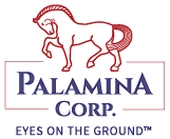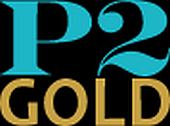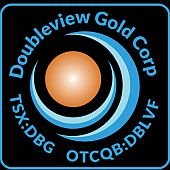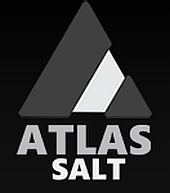 Tearlach drills 14.5 m of 729 ppm Li at Gabriel
Tearlach drills 14.5 m of 729 ppm Li at Gabriel
2023-05-17 11:07 ET – News Release
Mr. Charles Ross reports
TEARLACH’S GABRIEL PROJECT IN TONOPAH, NEVADA, DRILLING INTERSECTED SIGNIFICANT LITHIUM IN ALL PHASE 1 HOLES
Tearlach Resources Ltd. has released assay results for three new core stepout drill holes (GAB-013, 016 and 019) at its Gabriel project in Tonopah, Nevada. These newly reported holes intersected lithium-mineralized zones with intervals exceeding 1,000 ppm and grades up to 1,300 ppm. Results have now been received and reported for the 11 Phase 1 drill holes, with a lithium-mineralized interval intersected in each hole. These results represent a significant milestone for Tearlach and the development of the USA Flagship Gabriel project.
Assay Highlights :
Longest intercept of lithium mineralization for the three (3) newly reported holes is 115.9 feet (35.3m): Hole GAB-013,
Highest primary intercept grade is 729 ppm Li over 47.7 feet (14.5m): Hole – GAB-019,
Highest grade for an “Included intercept” is 879 ppm lithium over 27.6 feet (8.4m), including 1,100 ppm: Hole GAB-019,
The highest value for the reported three (3) holes is 1,300 ppm lithium GAB-013,
Expands Tearlach drilled mineralization to the northwest, northeast and southeast.
Phase 1 Program Highlights – 11 Holes :
Lithium mineralization, at a 400 ppm cut-off grade, has been intersected in all holes.
Longest primary intercept of lithium mineralization is 146.6 feet (44.7m) – GAB-009,
Highest primary intercept grade is 802 ppm over 61 feet (18.6m) – GAB-018,
Highest grade for an “Included intercept” is 1,196 ppm over 33.3 feet (10.2m) – GAB-012,
Geological continuity of targeted stratigraphy in all drill holes,
The latest Phase 1 drill holes expand the general area of known mineralization to 8,530 feet (2.6 km) by 9,190 feet (2.8 km).
Comparison with Previous Results :
Each GAB twin core hole drilled in the Phase 1 Program returned intercept values higher (range of 36 – 85%) than the corresponding Blackrock Silver (BRS) TN22 reverse-circulation rotary hole.
A total of 603 TN22 drill hole pulps have been collected and submitted for lithium re-assay.
“The Gabriel Phase 1 drill plan was an outstanding success and marks a significant milestone for exploration of the Gabriel property, with all holes intersecting an interval of lithium mineralization, and many individual samples assaying > 1,000 ppm lithium. Additionally, each GAB twin core hole drilled in the Phase 1 Program returned intercept values higher than the corresponding Blackrock Silver (BRS) TN22 reverse-circulation rotary hole (range of 36 – 85%). I commend the Nevada Geologic team for their commitment to effectively implementing the drilling, professional handling of the drill materials, and superb geologic investigations on the drill core and surface of the Gabriel property. We look forward to the data modeling phase of the exploration program to further evaluate the Gabriel property ,” said David C. Flint, Director.
Technical Information :
The tables below are a compilation of all Phase 1 core drill holes. Each hole intersected a zone of lithium mineralization, at a cut-off grade of 400 ppm. Primary intercept grades range between 535 to 802 ppm and interval lengths between 27.1 (8.4m) to 146.6 feet (44.7m). The Phase 1 program holes have been drilled within a general area of 8,530 feet (2.6 km) by 9,190 feet (2.8 km).
Lithium mineralization has consistently been intersected in the lower portion of the Siebert Formation. A second zone of mineralization has also been intersected in some holes, present in the upper portion of the Siebert. The lithium mineralization is hosted in a claystone-siltstone-sandstone-conglomerate sedimentary sequence.
Faults, with a normal sense of offset, have been mapped on the Gabriel surface. Fault-broken zones, gouge and cataclasites have also been logged in the core. The location and orientation of these structures will be assessed during the upcoming three-dimensional (3D) geologic modeling project.
The three (3) holes reported here each step-out from the original BRS drilling and expand the Tearlach-defined lithium mineralization footprint to the northwest, northeast, and southeast (see map below). The core box photos below display the lithology and corresponding lithium grades for the three (3) drill holes reported here, with each hole represented by one core box.
 |
The Gabriel twin holes consistently have higher intercept grades (36% to 85%) compared to the corresponding BRS TN22 holes. The TN22 pulp re-assay program will provide additional data pairs to investigate the underlying cause of this discrepancy.
 |
Collection of original pulps for the BRS TN22 re-assay program is substantially complete. Summary notes for the program are:
Pulps collected, for each hole, for intervals of the Siebert formation and into the underlying unmineralized unit,
TN22 drill hole location map provided below,
Pulp samples to be analyzed by the ALS Laboratory located in Reno, Nevada,
TN22 pulps transported from the BRS storage facility to ALS by TEA geologists,
Holes TN22-010, -011 -012 (151 pulps) submitted to ALS on April 28 th , 2023,
Holes TN22-013, -014, -015 -016 (263 pulps) submitted to ALS on May 4 th , 2023,
Holes TN22-018, -019 -020 (189 pulps) submitted to ALS on May 5th, 2023,
Sample collection pending for TN22-002 -003,
Each pulp is to be analyzed by ALS according to their ME-ICP61 method, and
Certified Reference Material (CRM) and blank materials inserted into the sample sets.
The TN22 re-assay data will be reported as the results are available.
 |
Table of Drill Core Handling and Analytical Procedures
Core boxes transported daily from the drill rig to the BRS core logging facility in Tonopah, Nevada, by either the drill crew or TEA geologists.
Initial logging of the core conducted by the TEA geologists, including for rock type, percent recovery and rock quality.
Sample intervals marked.
Certified Reference Material (CRM) pulps, coarse blank, and blank pulps inserted into the sample set,
Photograph each box of the core.
Core boxes transported from the Tonopah logging facility to the ALS Laboratory in Reno, Nevada, by either ALS contracted drivers or by TEA geologic staff.
Core cut and sampled by ALS staff.
Samples dried, weighed, crushed, pulverized, and split by ALS.
Samples subjected to a 4-acid digestion and analyzed by ICP (ME-ICP61) by ALS.
Chain of custody and security maintained throughout the material handling and analytical processes.
Qualified Person :
Mr. David Flint, CPG with AIPG., Director of Tearlach Resources Limited and President of the subsidiary Pan Am Lithium (Nevada) Corp, and a Qualified Person as defined by National Instrument 43-101 – Standards of Disclosure for Mineral Projects, has reviewed and approved the scientific and technical information contained in this news release.
About Tearlach :
Tearlach, a member of the TSX Venture 50, is a Canadian exploration company engaged in acquiring, exploring, and developing lithium projects. Tearlach is focused on advancing its flagship Gabriel Project in Tonopah, Nevada, bordering American Lithium’s TLC Deposit, and has completed 11 drill holes on the Gabriel Property. Tearlach has three lithium assets in Ontario: Final Frontier, Georgina Stairs and New Frontier. Final Frontier is located adjacent to and near Frontier Lithium’s PAK lithium deposit north of Red Lake. Georgina Stairs is located northeast of Rock Tech Lithium’s Georgia Lake deposit near Beardmore. Tearlach has two lithium assets in Quebec: Rose-Fliszar-Muscovite Project in the James Bay area and Shelby Project adjacent to and near Patriot Battery Metals’ Corvette lithium project and Winsome Resources’ Cancet and Adina lithium projects. Tearlach also has the Savant Property, an exploration stage Gold-Silver-Copper Property, in Northwestern Ontario. Tearlach’s primary objective is to position itself as North America’s leading lithium exploration and development company.
We seek Safe Harbor.
































